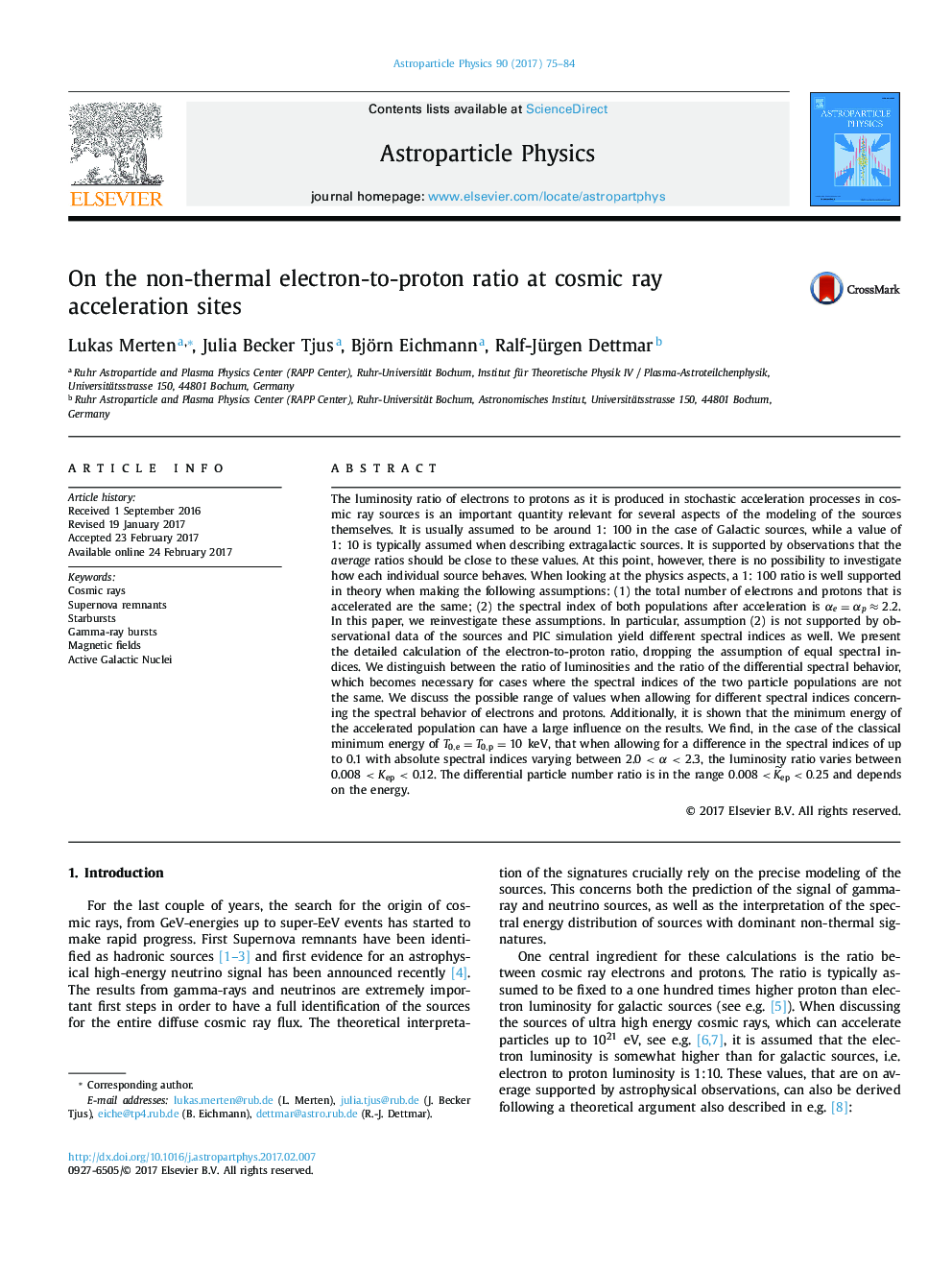| کد مقاله | کد نشریه | سال انتشار | مقاله انگلیسی | نسخه تمام متن |
|---|---|---|---|---|
| 5486723 | 1523336 | 2017 | 10 صفحه PDF | دانلود رایگان |
عنوان انگلیسی مقاله ISI
On the non-thermal electron-to-proton ratio at cosmic ray acceleration sites
ترجمه فارسی عنوان
در نسبت غیر تجمعی الکترون به پروتون در سایت های شتاب دهنده اشعه کیهانی
دانلود مقاله + سفارش ترجمه
دانلود مقاله ISI انگلیسی
رایگان برای ایرانیان
کلمات کلیدی
اشعه های کیهانی، بقایای ابرنواختر، استاربورست، پارگی گاما، میدانهای مغناطیسی، هسته های کهکشانی فعال،
موضوعات مرتبط
مهندسی و علوم پایه
فیزیک و نجوم
نجوم و فیزیک نجومی
چکیده انگلیسی
The luminosity ratio of electrons to protons as it is produced in stochastic acceleration processes in cosmic ray sources is an important quantity relevant for several aspects of the modeling of the sources themselves. It is usually assumed to be around 1: 100 in the case of Galactic sources, while a value of 1: 10 is typically assumed when describing extragalactic sources. It is supported by observations that the average ratios should be close to these values. At this point, however, there is no possibility to investigate how each individual source behaves. When looking at the physics aspects, a 1: 100 ratio is well supported in theory when making the following assumptions: (1) the total number of electrons and protons that is accelerated are the same; (2) the spectral index of both populations after acceleration is αe=αpâ2.2. In this paper, we reinvestigate these assumptions. In particular, assumption (2) is not supported by observational data of the sources and PIC simulation yield different spectral indices as well. We present the detailed calculation of the electron-to-proton ratio, dropping the assumption of equal spectral indices. We distinguish between the ratio of luminosities and the ratio of the differential spectral behavior, which becomes necessary for cases where the spectral indices of the two particle populations are not the same. We discuss the possible range of values when allowing for different spectral indices concerning the spectral behavior of electrons and protons. Additionally, it is shown that the minimum energy of the accelerated population can have a large influence on the results. We find, in the case of the classical minimum energy of T0,e=T0,p=10 keV, that when allowing for a difference in the spectral indices of up to 0.1 with absolute spectral indices varying between 2.0 < α < 2.3, the luminosity ratio varies between 0.008 < Kep < 0.12. The differential particle number ratio is in the range 0.008
ناشر
Database: Elsevier - ScienceDirect (ساینس دایرکت)
Journal: Astroparticle Physics - Volume 90, April 2017, Pages 75-84
Journal: Astroparticle Physics - Volume 90, April 2017, Pages 75-84
نویسندگان
Lukas Merten, Julia Becker Tjus, Björn Eichmann, Ralf-Jürgen Dettmar,
